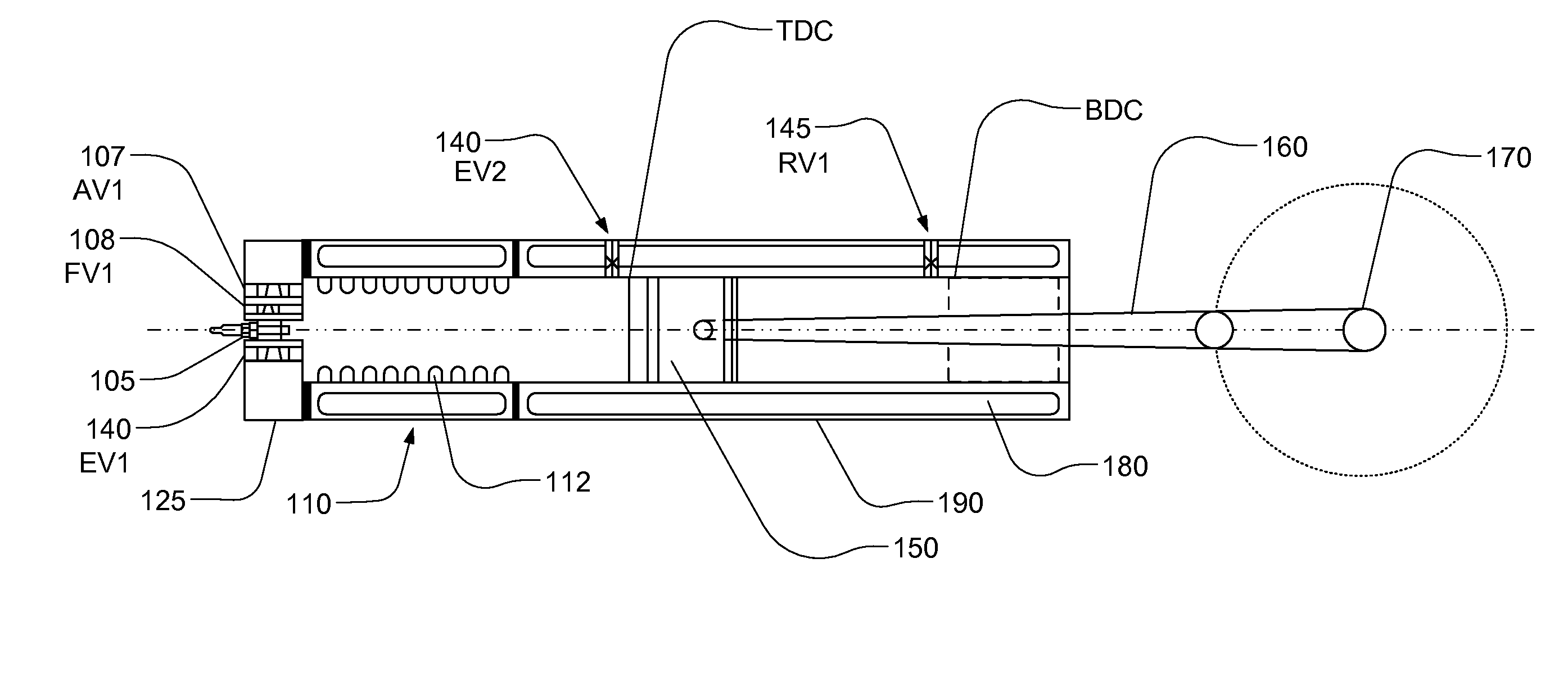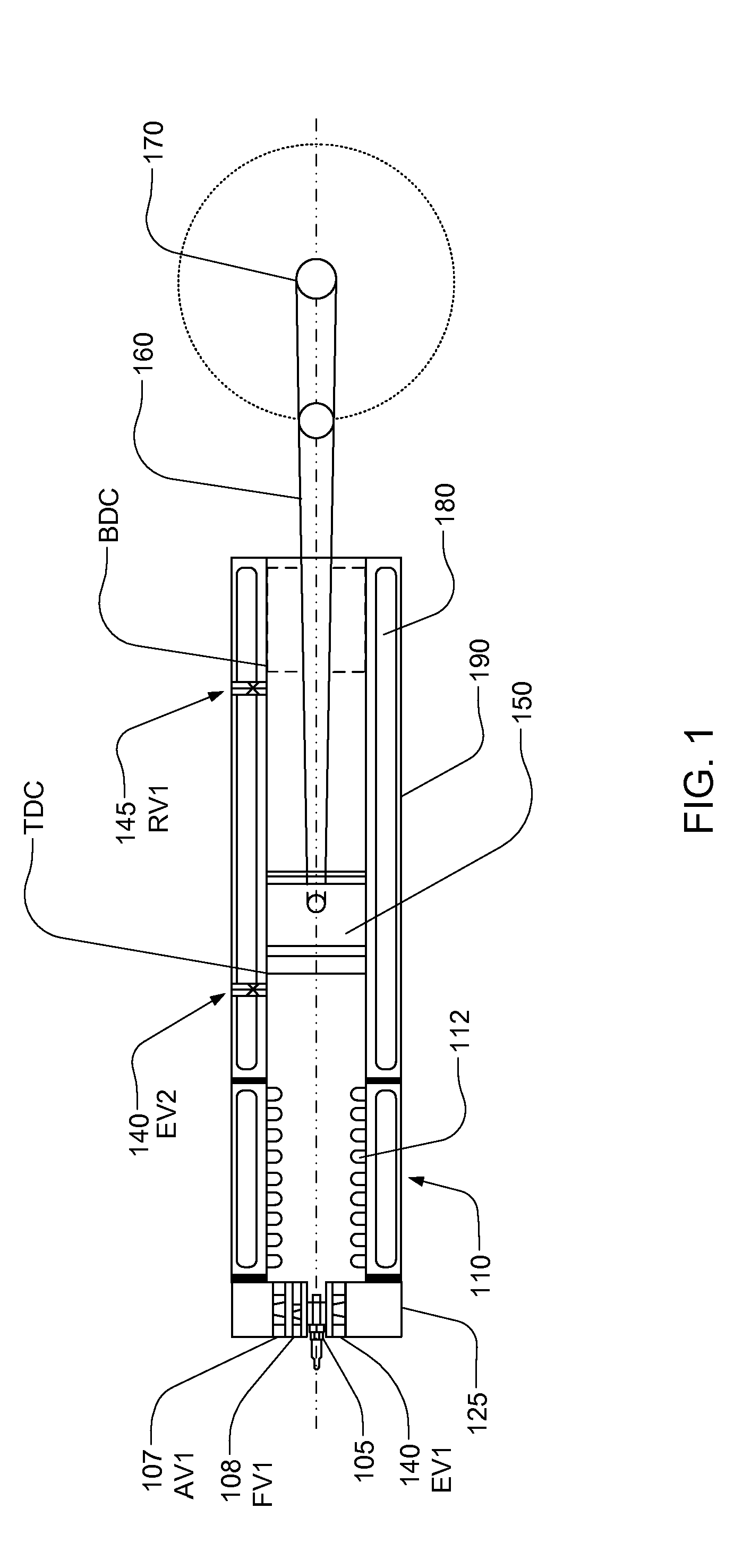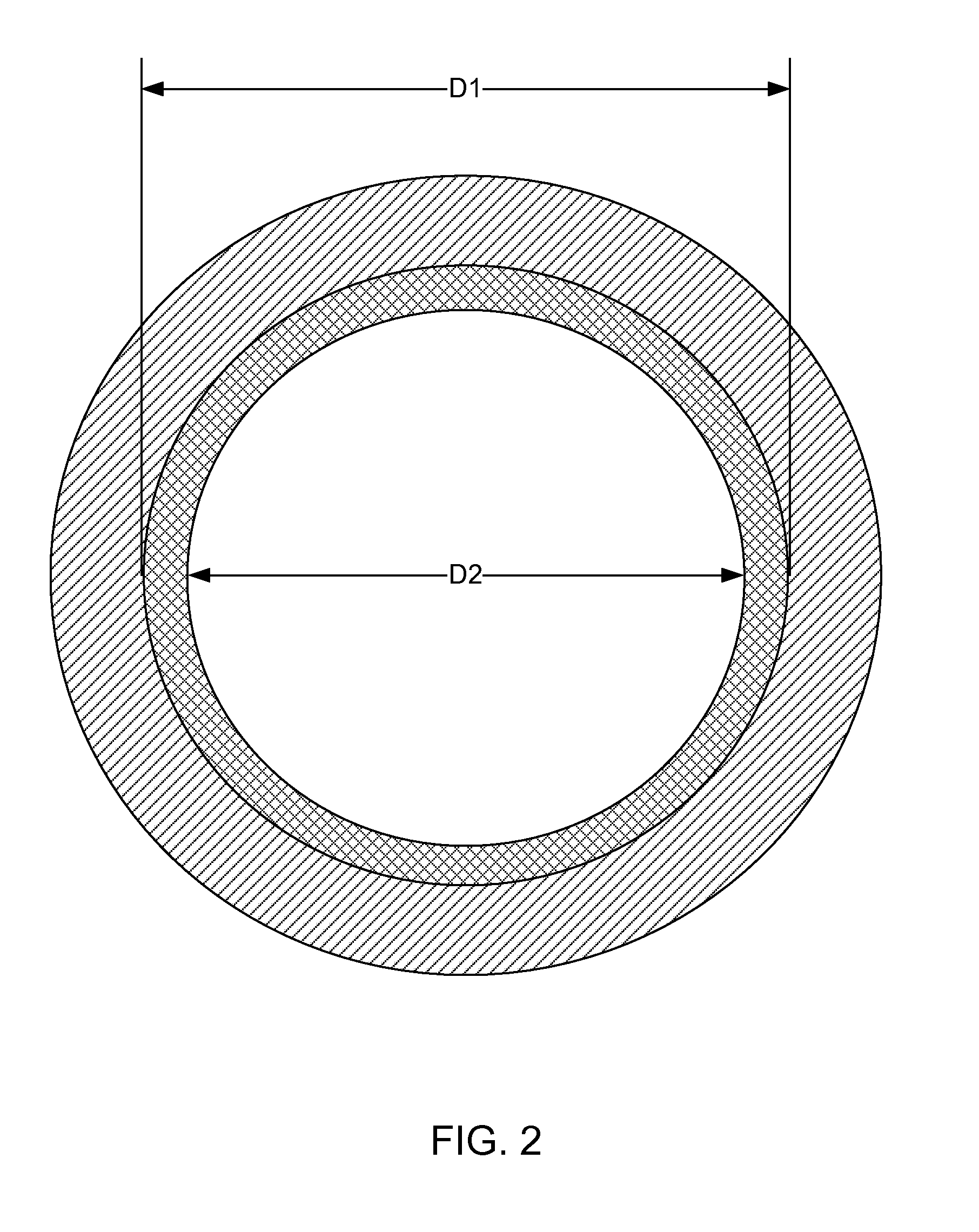Internal Detonation Reciprocating Engine
a reciprocating engine and internal combustion technology, applied in the direction of reciprocating combination engines, machines/engines, combination engines, etc., can solve the problem of not approaching 55 percent, and achieve the effect of increasing the efficiency of conventional internal combustion reciprocating engines
- Summary
- Abstract
- Description
- Claims
- Application Information
AI Technical Summary
Benefits of technology
Problems solved by technology
Method used
Image
Examples
Embodiment Construction
[0023]The invention, as defined by the claims, may be better understood by reference to the following detailed description. The description is meant to be read with reference to the figures contained herein. This detailed description relates to examples of the claimed subject matter for illustrative purposes, and is in no way meant to limit the scope of the invention. The specific aspects and embodiments discussed herein are merely illustrative of ways to make and use the invention, and do not limit the scope of the invention.
[0024]In conventional internal combustion reciprocating engines, detonations, or knocking is not desired and measures are taken to eliminate or reduce knocking. The octane number of gasoline is an indicator of detonability, the higher the octane number the lower the detonability. One effect of gasoline additives is a change in octane level. Gasoline additives may increase the price of fuel, add to pollution, and produce harmful products, including carcinogens. ...
PUM
 Login to View More
Login to View More Abstract
Description
Claims
Application Information
 Login to View More
Login to View More - R&D
- Intellectual Property
- Life Sciences
- Materials
- Tech Scout
- Unparalleled Data Quality
- Higher Quality Content
- 60% Fewer Hallucinations
Browse by: Latest US Patents, China's latest patents, Technical Efficacy Thesaurus, Application Domain, Technology Topic, Popular Technical Reports.
© 2025 PatSnap. All rights reserved.Legal|Privacy policy|Modern Slavery Act Transparency Statement|Sitemap|About US| Contact US: help@patsnap.com



